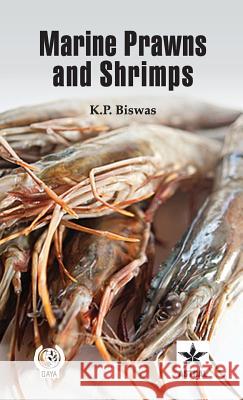Marine Prawns and Shrimps » książka
Marine Prawns and Shrimps
ISBN-13: 9789351241003 / Angielski / Twarda / 2011 / 350 str.
Marine prawns, tastier and costlier than their freshwater counter parts, have become an avenue to earn foreign exchange by the developing countries of South East Asia including India. The share of prawn in marine products exports from India is approximately 60 percent in quantity and around 80 per cent in terms of value. Sea food export industry of the country with a humble beginning of rupees 50 lakhs has grown to an organized industry, earning valuable foreign exchange of Rs. 8363.53 crores in 2006 exporting 612641 tonnes. Marine prawn fishery, which supports the export industry is generally confined to shallow coastal areas within 40 metres depth. Most of the prawn species breed throughout the year. Their growth differs according to the species and locality and most of them live for about two years. Besides identification and distribution of marine prawns, the habitats they prefer for living have been described along with the occurrence of important penaeid prawns around world's oceans. The bionomics of commercial varieties of some penaeid prawns have been outlined in the book, mentioning their growth, fecundity, spawning and larval development. Resources and landings of marine prawn forming the commercial fishery along Indian coasts have been given in details along with the catching methods in different areas. Postharvest, handling and transport of prawns from the landing centres to the consumers and their preservation from deterioration and spoilage have been described in details in the book. Due to stagnation of marine catch and to cope up the great demand of prawn in the international markets, culture of prawns in marine and brackish water ecosystem through the spread of new innovations and technology for industrial production have been outlined in the book. Informations on the deep sea and rare varieties of decapod crustaceans, such as, krill, spotted shrimp oposum shrimp is an additional attraction of the book. India is now facing constratins in in shrimp export due to emerging of competition among other shrimp producing countries has also been highlighted.
Marine prawns, tastier and costlier than their freshwater counter parts, have become an avenue to earn foreign exchange by the developing countries of South East Asia including India. The share of prawn in marine products exports from India is approximately 60 percent in quantity and around 80 per cent in terms of value. Sea food export industry of the country with a humble beginning of rupees 50 lakhs has grown to an organized industry, earning valuable foreign exchange of Rs. 8363.53 crores in 2006 exporting 612641 tonnes. Marine prawn fishery, which supports the export industry is generally confined to shallow coastal areas within 40 metres depth. Most of the prawn species breed throughout the year. Their growth differs according to the species and locality and most of them live for about two years. Besides identification and distribution of marine prawns, the habitats they prefer for living have been described along with the occurrence of important penaeid prawns around worlds oceans. The bionomics of commercial varieties of some penaeid prawns have been outlined in the book, mentioning their growth, fecundity, spawning and larval development. Resources and landings of marine prawn forming the commercial fishery along Indian coasts have been given in details along with the catching methods in different areas. Postharvest, handling and transport of prawns from the landing centres to the consumers and their preservation from deterioration and spoilage have been described in details in the book. Due to stagnation of marine catch and to cope up the great demand of prawn in the international markets, culture of prawns in marine and brackish water ecosystem through the spread of new innovations and technology for industrial production have been outlined in the book. Informations on the deep sea and rare varieties of decapod crustaceans, such as, krill, spotted shrimp oposum shrimp is an additional attraction of the book. India is now facing constratins in in shrimp export due to emerging of competition among other shrimp producing countries has also been highlighted.











